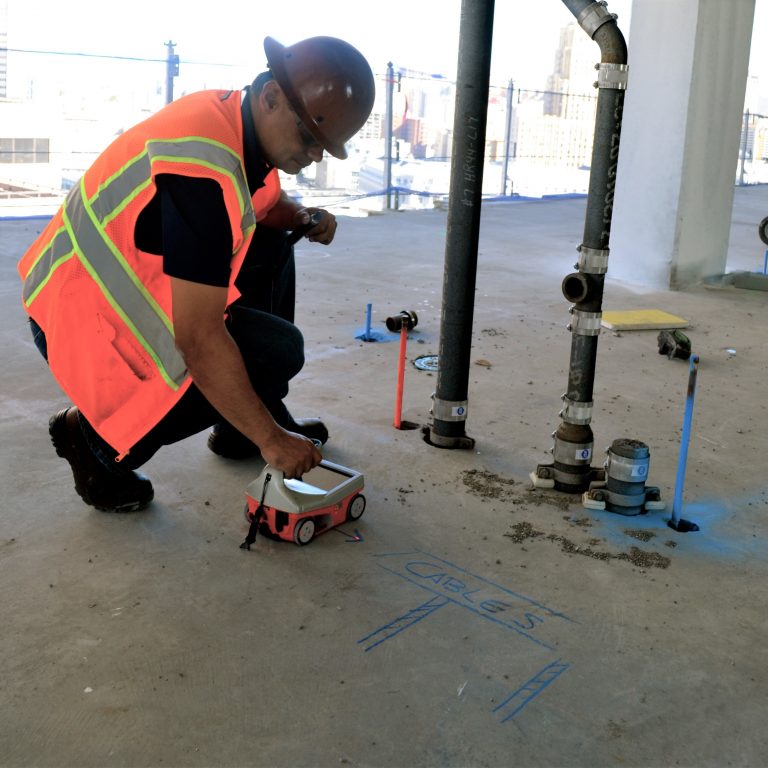Specialist Tips for Optimal Concrete Scanning Outcomes
Specialist Tips for Optimal Concrete Scanning Outcomes
Blog Article
Past the Surface: Leveraging Advanced Concrete Scanning Techniques for Unmatched Accuracy and Insight
In the realm of construction and facilities upkeep, the mission for precision and thoroughness is endless. Advanced concrete scanning techniques have actually become crucial devices in this quest, offering a glimpse underneath the surface area to introduce a globe of essential insights. By utilizing innovative technologies, professionals can uncover anomalies, assess the problem of concrete structures, and make educated decisions that shape the training course of jobs. The effects of these strategies extend much past plain surface-level examinations, assuring a depth of precision and understanding that is unrivaled.
Relevance of Advanced Concrete Scanning
The importance of making use of advanced concrete scanning techniques depends on the unrivaled precision they use for finding sub-surface abnormalities and ensuring structural stability. By utilizing innovative innovations such as ground-penetrating radar (GPR), electro-magnetic induction, and progressed finder imaging, building and construction professionals can dive below the surface of concrete structures with a level of accuracy that far goes beyond conventional assessment approaches. Concrete Scanning. These methods allow the identification of covert hazards like rebar corrosion, gaps, avenues, or post-tension wires that might compromise the security and safety and security of a structure with time
Moreover, progressed concrete scanning gives vital insights into the general problem of a concrete component without the demand for intrusive procedures, reducing the risk of creating damage throughout the analysis procedure. The ability to identify the exact area and deepness of possible problems allows for targeted repair work and upkeep, inevitably prolonging the life expectancy of the structure and maximizing its efficiency. In significance, the value of advanced concrete scanning can not be overemphasized in the realm of construction and facilities maintenance, where precision and reliability are critical.
Sorts Of Cutting-Edge Technologies

Anomalies and Issue Detection

In enhancement to GPR, concrete scanning strategies like thermography and impact-echo testing are also reliable in detecting anomalies and defects. By leveraging these advanced techniques, professionals can proactively resolve architectural concerns, guaranteeing the longevity and safety of concrete frameworks.
Assessing Concrete Problem
How can engineers properly examine the condition of concrete structures to guarantee their longevity and safety? Numerous sophisticated concrete scanning strategies are used for this objective. Ground-penetrating radar (GPR) is commonly utilized to analyze the internal framework of concrete, spotting gaps, fractures, and other abnormalities that might compromise its helpful resources toughness.
Furthermore, visual assessment stays a basic part of concrete problem assessment. Designers visually examine the surface for indications of damage, such as spalling, fracturing, or discoloration. Combining non-destructive testing approaches with visual assessments permits for a comprehensive assessment of concrete condition, making it possible for engineers to recognize possible problems beforehand and apply prompt maintenance or fixings. By leveraging these sophisticated strategies, designers can make certain the long-term resilience and security of concrete structures.
Enhancing Decision-Making Procedures
In the world of framework administration, maximizing decision-making procedures is necessary for ensuring the effective upkeep and durability of concrete structures. Enhanced decision-making processes in concrete management involve using sophisticated scanning strategies to gather in-depth information on the condition of structures. By leveraging modern technologies such as ground-penetrating radar and 3D imaging, stakeholders can make informed decisions concerning repair, reinforcement, or substitute techniques.
These advanced scanning techniques supply vital insights right into the inner composition of concrete, identifying possible concerns such as voids, splits, or rust that may not show up on the surface. This level of comprehensive info enables positive maintenance preparation, decreasing the threat of architectural failings and raising the general life-span of concrete structures.
In addition, by integrating digital documents and evaluation devices into the decision-making process, stakeholders can track the evolution of concrete conditions gradually, allowing anticipating maintenance strategies and next page optimizing source allocation. Inevitably, the combination of advanced concrete scanning techniques improves decision-making processes by providing unparalleled accuracy, understanding, and performance in facilities monitoring.
Final Thought
In final thought, progressed concrete scanning techniques use exceptional accuracy and insight in spotting anomalies, flaws, and analyzing the condition of concrete frameworks. By leveraging cutting-edge innovations, decision-making processes can be improved, bring about even more reliable and informed solutions for maintaining and fixing concrete facilities. These strategies play an essential duty in ensuring the safety and security and longevity of concrete structures, making them a crucial tool in the area of building and construction and design.
Additionally, advanced concrete scanning hop over to these guys supplies very useful insights right into the total problem of a concrete aspect without the demand for invasive measures, reducing the threat of creating damages during the evaluation process - Concrete Scanning. Another innovative innovation is 3D X-ray scanning, which offers in-depth photos of the internal structure of concrete, using beneficial details without the demand for damaging testing. Additionally, Concrete Cover Meters are used to measure the density of concrete cover over reinforcement bars properly. Improved decision-making procedures in concrete management entail utilizing advanced scanning techniques to collect thorough data on the condition of structures.In final thought, progressed concrete scanning techniques supply unequaled accuracy and understanding in detecting abnormalities, flaws, and analyzing the problem of concrete structures
Report this page